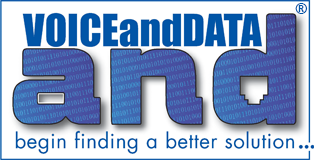The way you manage your company’s data plays a large role in its success. Falling short of this obligation is one of the many reasons why around 20% of small businesses fail within a year. Having the right database strategy in place can take your business’s performance to the next level, but many entrepreneurs don’t know how to get started.
The good news is the answer is easier than you might anticipate. We’ve created a brief guide with the key information you should consider when moving forward. Let’s explore what you need to know.
1. Cyber Security
As you might assume, proper data protection is crucial for getting the right results from your database strategy. The cybercrime industry is estimated to cost the world over $10 trillion by the end of 2025.
A large portion of this value stems from the amount of information hackers will compromise from businesses. Using updated software and implementing access control will help prevent contingencies.
2. Analytics
The only way to optimize your data management is by consulting your analytics. This offers key insight into areas of concern that need your attention. It also allows you to emphasize strategies that currently work.
Keep in mind that analytics information sometimes comes with a learning curve. It’s worth hiring a professional in many cases to better understand this information.
3. Collaboration
More often than not, you’ll have multiple team members working with the same data while collaborating. Collaboration features will help ensure everyone stays on the same page and has access to updated information.
The easier it is for users to work together, the faster they can complete projects. Collaboration features go a long way toward data preparation and maintaining data quality, as well.
4. Streamlined Data Management
Your database won’t be effective if you don’t have streamlined data management. For example, you should conduct a speed test to determine how quickly you can navigate to the required information. This is especially important for large databases.
Manually searching through these is impractical and often impossible. A key part of the management is proper documentation.
Your database strategy should document comprehensive information about the database’s use and performance. This information can be referenced in the future to make improvements or resolve issues.
5. Accessibility
Your database should be easy for the appropriate parties to access. Features like remote computing and multi-factor authentication are essential. Many database applications also come with real-time monitoring functionality.
They’ll alert you of unauthorized changes as soon as they occur. This is made possible through the use of artificial intelligence and machine learning.
Never Neglect Your Database Strategy
The information in this guide will help ensure you choose the right database strategy for your needs. From here, you should have no trouble avoiding issues you would’ve otherwise encountered. Voice and Data, Inc. has proudly served our clients since 2006 and strives to implement best-in-class products and services. Whether your needs are simple or complex, we are prepared to help. You can learn more about what we can offer when you schedule a consultation today.


























